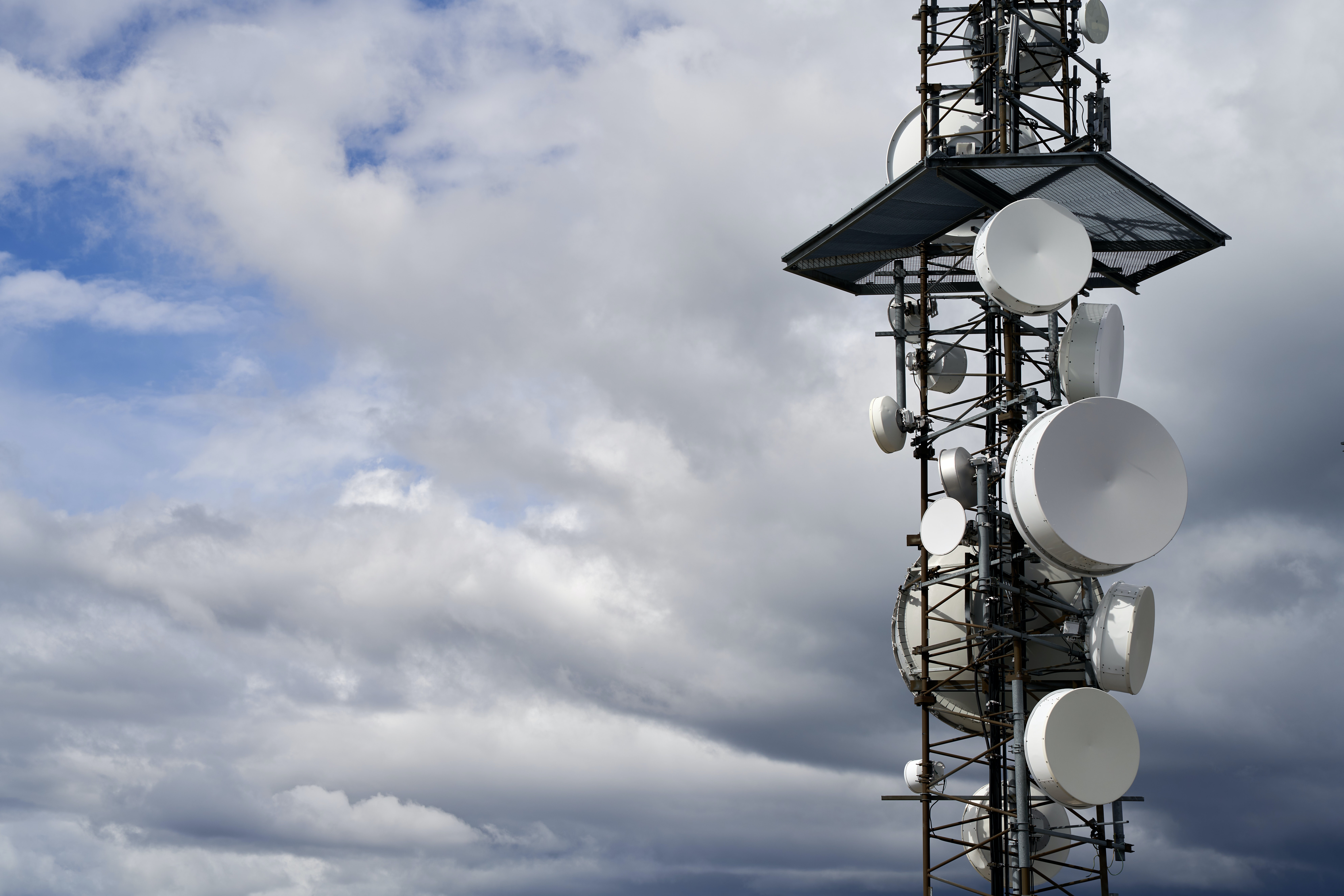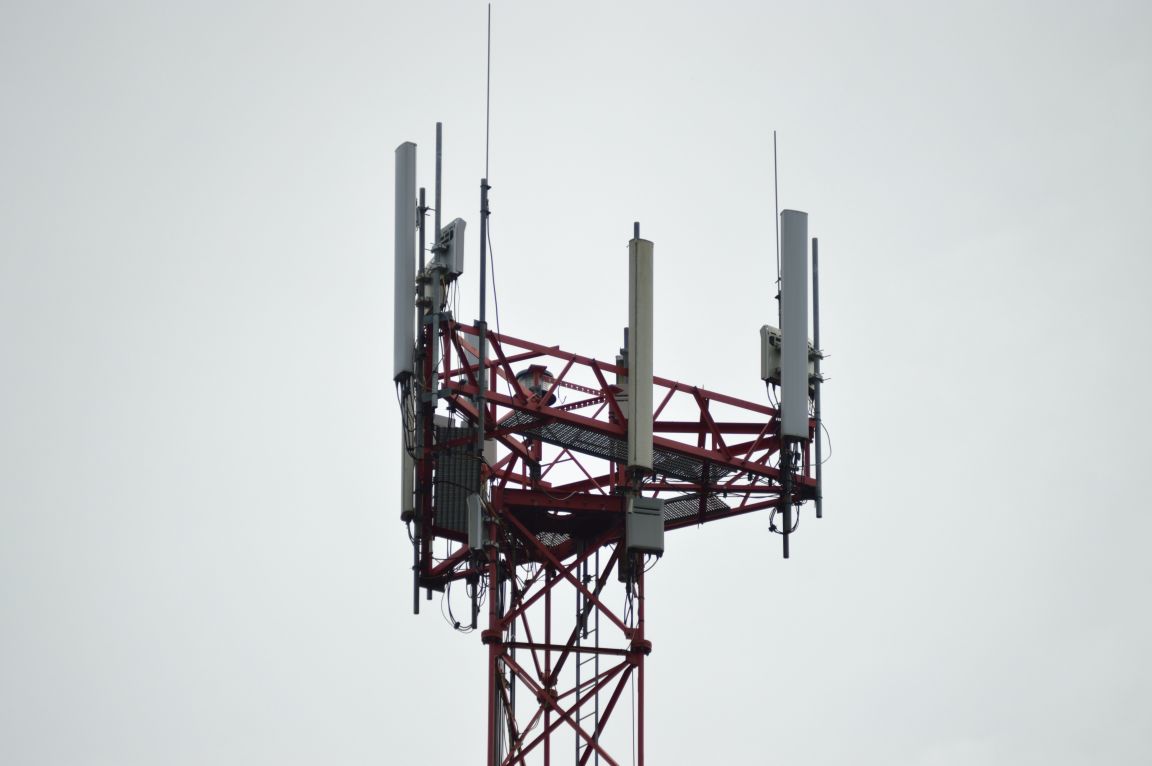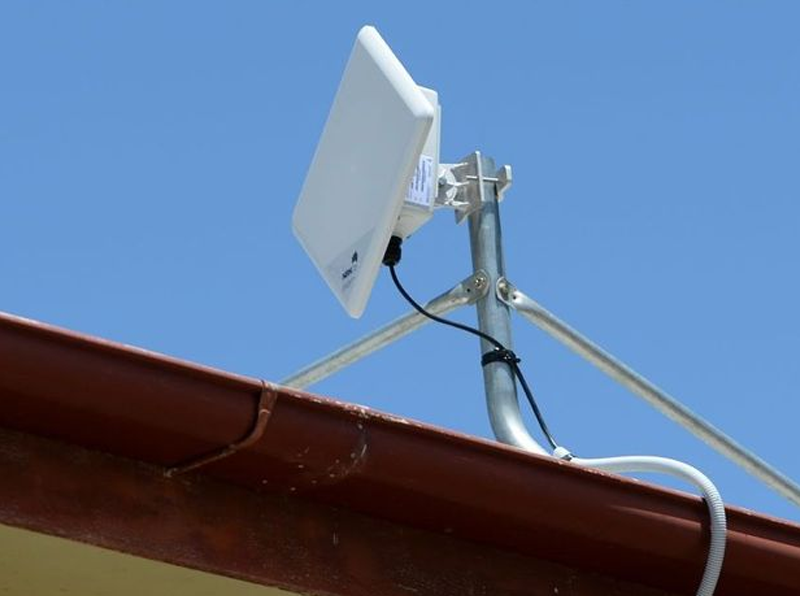Connectivity for Business: 4G LTE / 5G vs. Fixed Wireless
In this post we dig into wireless connectivity technologies and their efficacy for enterprise including cellular / 4G LTE / 5G, fixed wireless, and satellite.

Jul 21, 2022
SHARE
A Wireless WAN for enterprise networks? There are definitely some trust issues here – and with good reason. Imagine standing onstage in a cold sweat, helplessly watching the Spinning Beach Ball of Death, while a thousand conference attendees waiting for your presentation start to shuffle around and mull over the buffet options.
So why should anyone take the chance on an enterprise Wireless WAN solution? Here’s why:
Wired networks aren’t always the most practical solution for a business’s needs – physical factors like geolocation or structural limitations can make it difficult to get high-quality fiber-based connectivity at a reasonable price.
Wireless networks can provide a flexible (and affordable) secondary or tertiary connection for failover redundancy.
Wireless technology continues to improve at an astonishing rate.
Our guide to the different types of wireless technologies will help you find the most effective wireless network solution for your enterprise. These are the different types of wireless network we’ll be discussing in this blog article:
Cellular / 5G / LTE Connectivity
Fixed Wireless
Satellite Internet Access
Cellular / 5G / LTE Connectivity
What Is Cellular Internet and How Does It Work?
Cellular internet is the simplest enterprise wireless network option, and works just like your cell phone does, by connecting to your chosen carrier’s cellular network wirelessly. Using a 4G LTE router, you can achieve reasonable speeds and bandwidth, and access all the features you’d expect from a wired network – multiple devices and users, VPNs, guest networks, and mobile-traffic monitoring are all possible using a 4G LTE router. These routers are also available as battery-powered units, giving you even more freedom.
Cellular bandwidth and network performance will vary significantly based on location and cell network utilized. In major cities you can expect to see 4G LTE average download speeds north of 30 Mbps and upload speeds close to 10 Mbps, with performance that’s significantly weaker in non-metro areas. In areas where 5G network is deployed and available, network performance can be significantly better.

Source: Miguel Padrinan
Pros
Mobility. Great for enterprises on the move, or those who can’t access the infrastructure necessary to create a wired network.
Convenience. Easy to set up, and you can test the site viability using your cellphone to assess the signal strength beforehand.
Value for money. Only pay for what you’ve used, via a metered service, which is handy if you’re looking to implement a secondary or tertiary circuit for failover.
Flexibility. Rolling contracts on a month-by-month basis can provide additional flexibility, compared to wired solutions which often require longer-term and binding contracts. If circumstances change, you aren’t locked in.
Upgrades available. Some ISPs will offer either ‘best effort’ or ‘dedicated service’ options – with a ‘dedicated service’ cellular network, your chances of replicating enterprise-level network performance are even higher.
Cons
Signal consistency. Just like your cell phone, your cellular wireless network is only as good as your signal. If you’re considering this type of wireless network, factor in your proximity to a network tower (ideally within 10 miles), the number of connected devices you’ll use, and the antenna strength of your router.
Fiber still wins. All other factors being equal, a wired fiber network will provide the superior solution – with a cellular network, speed and bandwidth will be lower, and the average throughput cost per Mbps will be higher. All measurements of network quality will be better with fiber as well, including latency, jitter, and packet loss.
Data caps will slow you down. Most cellular carriers will set a data cap to limit your monthly usage. Exceeding the cap typically decreases each user’s bandwidth by 1 to 3 Mbps (what’s termed “throttling”).
Use Cases
Good for ‘mobile office’ setups – often used by first responders/incident response units, FEMA, mobile healthcare units (such as blood-donor centers, mobile clinics), and reporters on location.
Traveling marketplaces – fairs, festivals, and green markets.
Repair teams and technicians – people who are constantly moving around, but still need to access network services.
Secondary circuits – if you’re building ahigh-availability system, but you’ve limited space for your redundancy network on your land lines, a cellular solution can provide connectivity for your redundant server.
Backup – if you don’t need fullactive-active redundancy, then a cellular LTE network can provide an economical, metered service option for active-passive failover redundancy.
Fixed Wireless
What Is Fixed Wireless and How Does It Work?
Beloved of rural communities all over the country, fixed wireless isn’t just for cable news networks. For some enterprises, it’s a valid network solution to geolocationary factors that would rule out a cable fiber network.
A fixed wireless network is a static system, established between two fixed points – the network tower, and a high-powered transmitter (transmit is needed for upload) / receiver (receiver is needed for download) combo – by your service provider to bring the tower signal closer to your location. Service providers that operate and manage fixed wireless networks are typically referred to as “Wireless Internet Service Providers”, or “WISPs” for short.
The service provider installs the transmitter / receiver on your property. The transmitter / receiver then provides internet access. The experience will be very similar to what you’d expect from a wired broadband service.
There are licensed and unlicensed frequencies that your fixed wireless provider will use to create a layer 1 medium through which you can run Internet, MPLS, SD-WAN or any other type of service. Depending on network design and hardware used, a fixed wireless connection can provide anything from a lower bandwidth, broadband-like connection to a high-performance, SLA-backed dedicated internet connection.

Source: AT&T
Pros
Quick install. When you’re establishing new locations (and planning to stay awhile), fixed wireless is an agile approach to get you up and running quickly.
Upgradeable. Available either as best effort, or dedicated service for guaranteed bandwidth, no matter how much traffic your ISP is experiencing.
Weatherproof (almost). Unaffected by all but the most extreme weather, due to the specific frequencies service providers use for this kind of network.
Service-side redundancy. Fault tolerance and redundancy features are often implemented at the service end, increasing the reliability of this type of wireless network.
Cons
Easily blocked. To connect wirelessly with the fixed network, you’ll need a clear line-of-sight between device and access point. Physical barriers and obstacles, like trees, buildings, and power lines can cause interference.
Distance constraints. Your proximity to the network tower is still a factor – just like cellular networks, you’ll want to be less than 10 miles away from the tower for optimum performance (and hopefully less than five miles from a good bar, if you’re out in the sticks).
Data caps. Certain vendors may set a data cap, so if you exceed the cap, expect to lose 1 to 3 Mbps of bandwidth or pay a fee for usage above a cap.
Use Cases
Interim / time sensitive solutions. A fiber buildout typically takes between 90 and 120 days. If the new location needs to be ready yesterday, a fixed wireless system can be deployed in a few days, rather than weeks.
Remote locations. In areas of the country that lag on infrastructure, a fiber solution may well be cost prohibitive. Fixed wireless is a favorite for the oil and gas, and mining industries, some process-heavy manufacturing sectors, and residential construction projects – activities that generally take place outside of built-up areas.
Secondary circuits. If your landlines are limited, then a fixed wireless network will provide you with a great option for redundancy. If you don’t need the flexibility of location that a cellular/4G LTE solution provides, then the near-fiber levels of speed and throughput will more than compensate for the reduced mobility.
Backup. Even if you’re not looking for an “always-on”, active-active redundancy option, you can keep a fixed wireless network configured for active-passive failover redundancy. And if a new location has been set up quickly using fixed wireless, then consolidated later with a wired network, the fixed wireless solution can still provide a legacy benefit, remaining operational for redundancy purposes.
Satellite Internet
What Is Satellite Internet and How Does It Work?
This is the one that’s got the Silicon Valley geeks gibbering into their matcha lattes given its a focus point of a certain engineer turned billionaire. Satellite internet allows your internet data to be transferred via an orbiting satellite, to and from a satellite dish installed at your location.
Satellite internet can be used as either a mobile or static solution, depending on the equipment you choose. One of the biggest advantages of satellite internet is that it can reach almost every region of the world, making it particularly useful in areas where wired internet (or even fixed wireless) cannot be deployed.
Also known as a VSAT (very small aperture terminal) network, for larger commercial operations additional terminals can be deployed, allowing for greater geographical coverage using the same satellite hub.
Unfortunately, satellite internet does have constraints. It suffers from serious bandwidth and latency limitations (you are sending packets to space and back after all) and can be pricey relative to other solutions, but it works well in situations where nothing else works.

Source: SpaceX
Pros
Location, location, location. Satellite internet will literally follow you to the ends of the earth. The most effective type of wireless network for really remote locations, satellite internet doesn’t require network towers, cable or phone lines at all. And following OneWeb’s launch of 36 satellites in 2021 tocover the northern hemisphere, access is now truly global.
Upgradeable. Available as either best effort, with speeds ‘up to’ the advertised bandwidth often falling short during periods of heavy network traffic, or as a premium dedicated servicewith protected bandwidth.
It’s the future? Companies like OneWeb and Elon Musk’s Starlink are investing and innovating at a furious pace – current throughput levels are competitive with fiber, and may possibly exceed fiber’s capabilities in the near future.
Cons
Latency. Did we mention this is the internet from space? It can take a while. Latency issues are steadily improving with this technology – current latency levels are averaging at 600 ms, compared to the 30 ms usually experienced via a cabled network. This won’t impact on most enterprise activities, but video calling can be visibly affected, as can VPNs, depending on how they’ve been configured.
Weather. Weather conditions are also a factor – when the signal travels so far, through multiple layers of atmosphere, the cumulative effect on the throughput can be considerable. Heavy concentrations of water and dust particles can weaken and block the radio signals.
Price + Potential Data caps. Satellite internet, per Mbps, is often the priciest connectivity option to buy if alternatives are available given the capital intensity required to deploy a satellite network. Also, vendor-implemented data caps may exist and will limit bandwidth once exceeded, slowing you down.
Use Cases
As you can imagine, there’s plenty of scenarios where satellite broadband is the preferred type of wireless network. These include;
Offshore industries. Maritime satellite broadband is used extensively to provide coverage for shipping companies and offshore oil rigs.
Mining operations. On larger mining projects where underground connectivity is required, wirelessly connected terminals can extend the network into areas where radio waves would normally fail to penetrate.
Commercial ports. Geolocation and distance factors make satellite internet a viable solution for ports, either as primary or secondary/backup circuits.
Pop-up / temporary retail. A VSAT system is effective for narrowband data such as credit card or POS transactions at a remote or temporary retail pop-up location.
Mobile office set-ups for remote locations. Large-scale sporting events, such as long-distance car rallies and cycling competitions, may choose to invest in VSAT network technology, as might film crews who regularly work in far-flung locations.
Secondary or back-up solutions. Wall Street whiz kids might be able to justify the outlay, but for most enterprises a secondary or backup satellite internet solution would be unnecessarily expensive. Some organizations might benefit from a hybrid solution which allows them to operate either from a fixed base (wired) or a remote location (satellite) with minimal interruption.
Top-secret government labs experimenting on telepathic children (only kidding – those guys always use fiber).
Conclusion
While a fiber cable network is still a hard proposition to beat at the enterprise level, many businesses will find that one of the types of wireless network described above is the perfect answer to their needs. Whether it’s a primary network for a mobile, nomadic workforce, or a backup wireless network solution for a company that simply can’t afford the downtime, there’s an enterprise Wireless WAN network solution to suit most requirements.
Each of these different wireless technologies has its own limitations – data caps are likely to remain an inconvenience, as are data security issues. But as wireless capability evolves, the potential benefits could soon render the drawbacks irrelevant. If you’ve identified complications – in your business needs, the geography of your network, or your internet resiliency requirements – then bring your project to our managed services team for a quote. Lightyear has a vendor for every type of wireless network, and we’ve managed thousands of wireless installations, so go ahead and fill out our questionnaire to get started.
Want to learn more about how Lightyear can help you?
Let us show you the product and discuss specifics on how it might be helpful.
Not ready to buy?
Stay up to date on our product, straight to your inbox every month.
